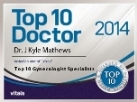Treatment of Menopause, Perimenopause,and Postmenopause
The treatment of Perimenopause, Menopause, and Postmenopause has become extremely confusing for women. Many traditional therapies using estrogen were called into question by the WHI study in 2001. This has allowed a vast proliferation of misinformation, misinterpretation of scientific data, and the development of treatment “potions” by unethical providers.
Dr. Mathews is committed to providing patients with factual information regarding treatment options and management to allow women to make an informed decision regarding their care.
Most treatments focus on relieving your signs and symptoms you may experience.
Treatments for Menopause Symptoms may include:
Hormone therapy. Estrogen therapy remains, by far, the most effective treatment option for relieving menopausal hot flashes. Depending on your personal and family medical history, replacement estrogen in the lowest dose needed to provide symptom relief for you may be indicated. Women who still have their uterus will require the addition of progesterone to prevent the uterus from developing possible problems.
Low-dose antidepressants. Venlafaxine (Effexor), an antidepressant related to the class of drugs called selective serotonin reuptake inhibitors (SSRIs), has been shown to decrease menopausal hot flashes. Other SSRIs can be helpful, including fluoxetine (Prozac, Sarafem), paroxetine (Paxil, others), citalopram (Celexa) and sertraline (Zoloft).
Gabapentin (Neurontin). This drug is approved to treat seizures, but it also has been shown to significantly reduce hot flashes.
Clonidine (Catapres, others). Clonidine, a pill or patch typically used to treat high blood pressure, may significantly reduce the frequency of hot flashes, but unpleasant side effects are common.
Bisphosphonates. Doctors may recommend these nonhormonal medications, which include alendronate (Fosamax), risedronate (Actonel) and ibandronate (Boniva), to prevent or treat osteoporosis. These medications effectively reduce both bone loss and your risk of fractures and have replaced estrogen as the main treatment for osteoporosis in women.
Selective estrogen receptor modulators (SERMs). SERMs are a group of drugs that includes raloxifene (Evista). Raloxifene mimics estrogen’s beneficial effects on bone density in postmenopausal women, without some of the risks associated with estrogen.
Vaginal estrogen. To relieve vaginal dryness, estrogen can be administered locally using a vaginal tablet, ring or cream. This treatment releases just a small amount of estrogen, which is absorbed by the vaginal tissue. It can help relieve vaginal dryness, discomfort with intercourse and some urinary symptoms.
It is important that you are evaluated during the years leading up to menopause (perimenopause) and the years after menopause (postmenopause) for preventive health care as well as care of medical conditions that may occur with aging.











